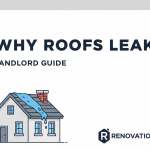N.Y. Renovation Services
What to Do After Buying a House: A New NYC Homeowner’s Checklist

Congratulations! After navigating the competitive New York City real estate market, you’ve finally closed on your new home. Whether it’s a co-op in Manhattan, a brownstone in Brooklyn, or a house in Queens, the feeling of getting those keys is unparalleled. But once the closing papers are signed, a new chapter begins. The first few days and weeks are a critical time to secure your investment, get organized, and lay the groundwork for making your new house a true home.
To help you get started, we’ve created an essential checklist of the first 10 things every new NYC homeowner should do. This guide will walk you through the immediate priorities, from security and safety to cleaning and planning for the future. For any maintenance or renovation needs that arise, RenovationServices.com is your trusted partner.
1. Change the Locks & Secure Your Home
This should be your absolute first priority, ideally done on closing day. You have no way of knowing who the previous owners gave a key to—contractors, dog walkers, relatives, neighbors. Changing the locks is a simple, inexpensive step that provides immediate peace of mind.
The NYC Factor
In a dense urban environment, security is paramount. If you’ve purchased an apartment, check your co-op or condo board’s rules regarding lock changes. Some buildings have specific requirements for the type of lock on your front door to maintain a uniform appearance. Also, consider upgrading to a high-security lock or adding a smart lock for keyless entry and guest access control.
The Fix
Call a locksmith ahead of time and schedule them to meet you at the property right after you close. While they are there, have them check the security of your windows and any other access points. This is a small investment for a major security upgrade.
2. Deep Clean Before You Unpack
Before you start moving in boxes and furniture, take advantage of the empty space to perform a thorough deep clean. This is your one and only chance to clean every surface—floors, walls, ceilings, inside cabinets, and closets—without having to move anything.
The NYC Factor
Older NYC buildings can accumulate decades of dust and grime in hidden places. Pay special attention to cleaning radiators, window sills, and the areas behind large appliances if they were left behind. The NYC Department of Health provides resources on maintaining a healthy home environment, which starts with a clean slate.
The Fix
You can tackle this yourself or hire a professional cleaning service. If you hire pros, be specific about wanting a “post-construction” or “move-in” deep clean. They will have the industrial-strength products and equipment to do the job efficiently. Don’t forget to clean inside kitchen cabinets and appliances like the oven and refrigerator.
3. Check Smoke & Carbon Monoxide Detectors
Safety is non-negotiable. As soon as you have access to the property, test every smoke and carbon monoxide (CO) detector. If they are battery-powered, replace all the batteries immediately, even if they seem to be working. Detectors have an expiration date, typically 7-10 years. If the units are old, replace them entirely.
The NYC Factor
New York City law has specific requirements for the placement and type of smoke and CO detectors in residential dwellings. According to the FDNY, you must have a smoke alarm in every bedroom and a CO alarm within 15 feet of the primary entrance to any sleeping room. It’s a good idea to familiarize yourself with the latest regulations to ensure your new home is compliant and safe.
The Fix
Purchase new batteries and, if necessary, new detector units before your closing day. Make this one of the very first tasks you complete. It’s a simple, 15-minute job that could save your life.
4. Locate Your Main Shut-Off Valves
In a home emergency, like a burst pipe, knowing where to shut off the water immediately can save you from thousands of dollars in water damage. You need to locate the main water shut-off valve for your entire home, as well as individual shut-off valves for toilets, sinks, and washing machines.
The NYC Factor
In a single-family home in Staten Island or Long Island, the main shut-off is typically in the basement near the water meter. In a co-op or condo, the situation is more complex. You will have individual shut-offs under your sinks, but the main shut-off for your entire apartment line may be in a utility closet in the hallway or the basement. You should also locate your electrical panel and know how to shut off individual breakers.
The Fix
Do a walkthrough and physically locate and label each valve and breaker. If you’re in an apartment, ask the building super to show you where any shared shut-offs are located. Take a photo with your phone so you have a record. This knowledge is crucial before you start any bathroom or kitchen renovation.
5. Paint Before You Move In
Just like deep cleaning, painting is infinitely easier in an empty house. You won’t have to spend hours moving furniture to the center of the room and covering it with plastic. Professional painters can work much more efficiently, which can save you money on labor costs.
The NYC Factor
A fresh coat of paint is one of the most cost-effective ways to make a new space feel like your own. It covers up scuffs from the previous owners and gives you a clean canvas. If you’re considering this, our Manhattan Painting Services page has more details on the process.
The Fix
If your budget allows, schedule painters to come in after the cleaning is done but before your moving truck arrives. Even if you only have time to paint the main living areas and bedrooms, it’s a step you won’t regret.
6. Update Your Address
This is a crucial administrative task. Start the process of changing your address with essential services before you even move.
The Fix
- USPS: File an official change of address with the U.S. Postal Service online at USPS.com.
- Utilities: Contact Con Edison and National Grid to transfer service to your name.
- Financials: Update your address with banks, credit card companies, and your employer.
- Government: Update your address with the DMV, voter registration, and any other government agencies.
- Deliveries: Don’t forget to update your address on Amazon, food delivery apps, and other online shopping accounts.
7. Unpack Strategically
The temptation is to unpack everything at once, but this can lead to chaos. A more strategic approach will make the first few days much more comfortable.
The Fix
Start with the essentials. Set up your bed and make it with fresh linens first—you’ll be grateful for it at the end of a long day of unpacking. Next, focus on the kitchen and bathroom. Unpack toiletries, a shower curtain, towels, a coffee maker, and some basic dishes and utensils. This allows you to feel settled and comfortable while you tackle the rest of the boxes at a more leisurely pace.
8. Create a Home Maintenance Binder
Being a homeowner means being responsible for maintenance. Start organizing from day one by creating a binder (physical or digital) for your new home.
The Fix
In this binder, keep all important documents: the inspection report, appliance manuals and warranties, paint color codes, and contact information for any contractors you use. Create a seasonal maintenance checklist (e.g., clean gutters in fall, check A/C in spring). This will be an invaluable resource for years to come.
9. Meet Your Neighbors
Building good relationships with your neighbors is one of the best things you can do after moving in. They can be a source of information, a helping hand, and an important part of your security network.
The NYC Factor
In an apartment building, your neighbors are your closest allies. They can tell you about the best local spots, give you a heads-up about building issues, and keep an eye on your apartment when you’re away. If you’re in a single-family home, they’re the ones who will notice if something seems amiss.
The Fix
Don’t be shy. When you see your neighbors in the hallway, on the street, or by the mailbox, introduce yourself. A simple “Hi, we just moved in” goes a long way.
10. Don’t Rush into Major Renovations
It’s tempting to want to start tearing down walls and creating your dream kitchen or bath right away. However, as we advise in our 10 Essential Renovation Tips guide, it’s often wise to wait.
The Fix
Live in the space for at least six months. You’ll learn the quirks of the house, how the light moves, and how you actually use the space. The things you thought you’d hate might not bother you, and new priorities will emerge. This “living-in-it” phase will lead to a much more thoughtful and successful renovation plan when the time is right.
Ready to Make Your New House a Home?
Once you’re settled, the real fun begins. From a fresh coat of paint to a full-scale renovation, RenovationServices.com is here to help you transform your new property into the home of your dreams. Contact us for a free consultation.





